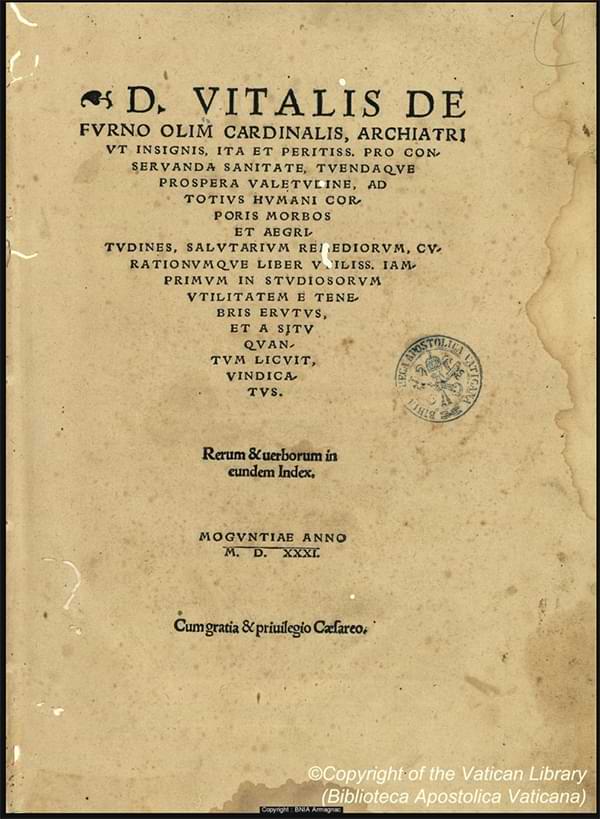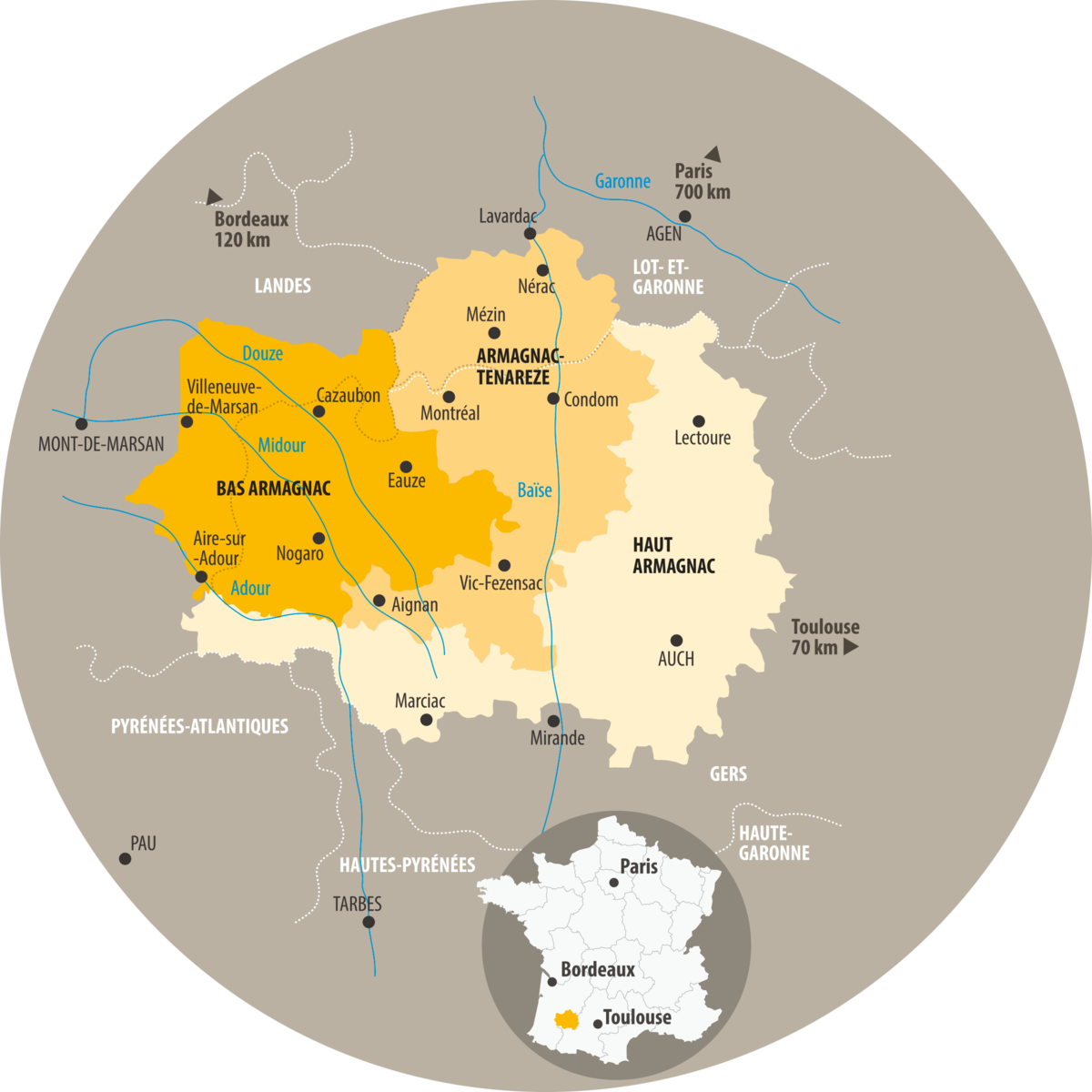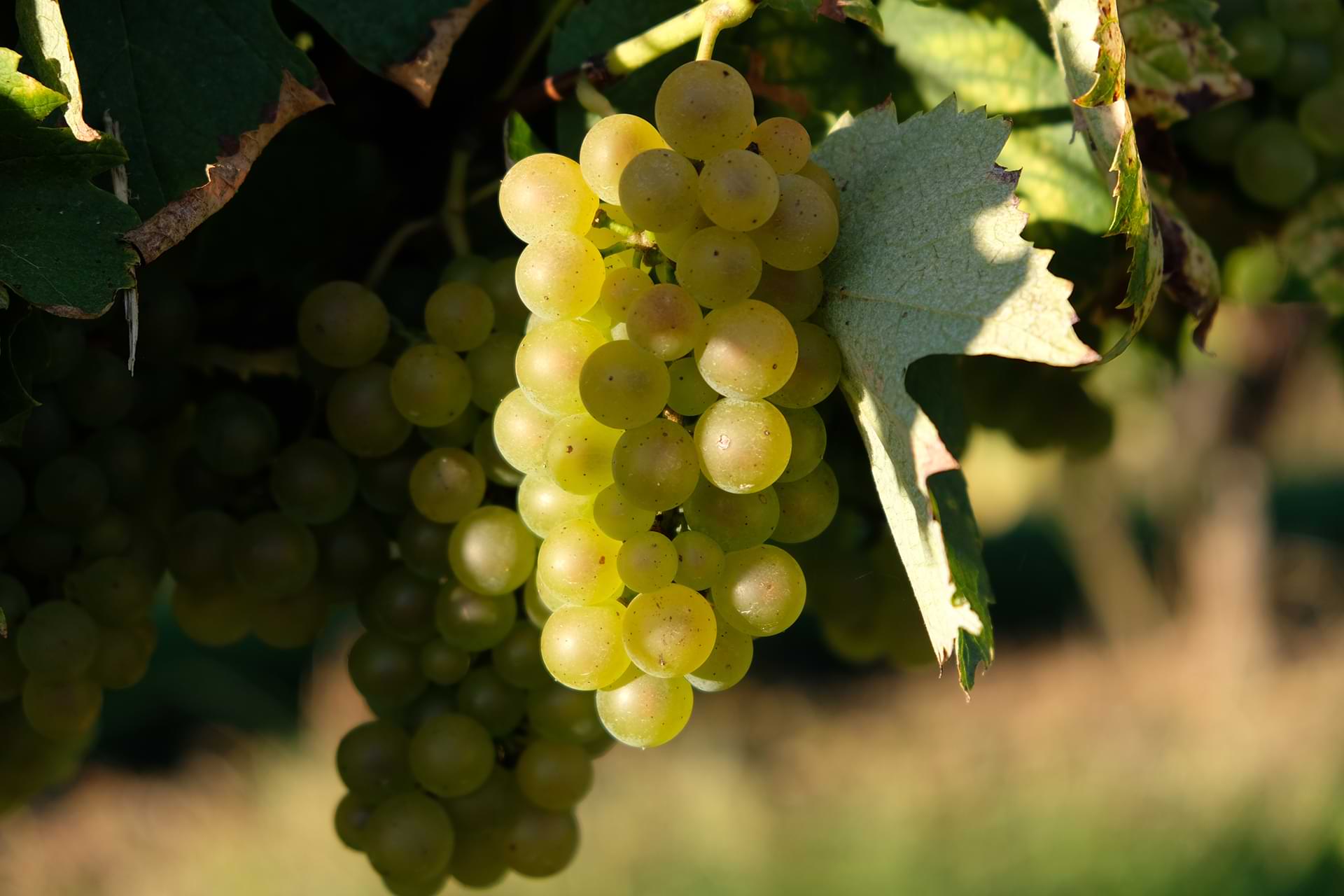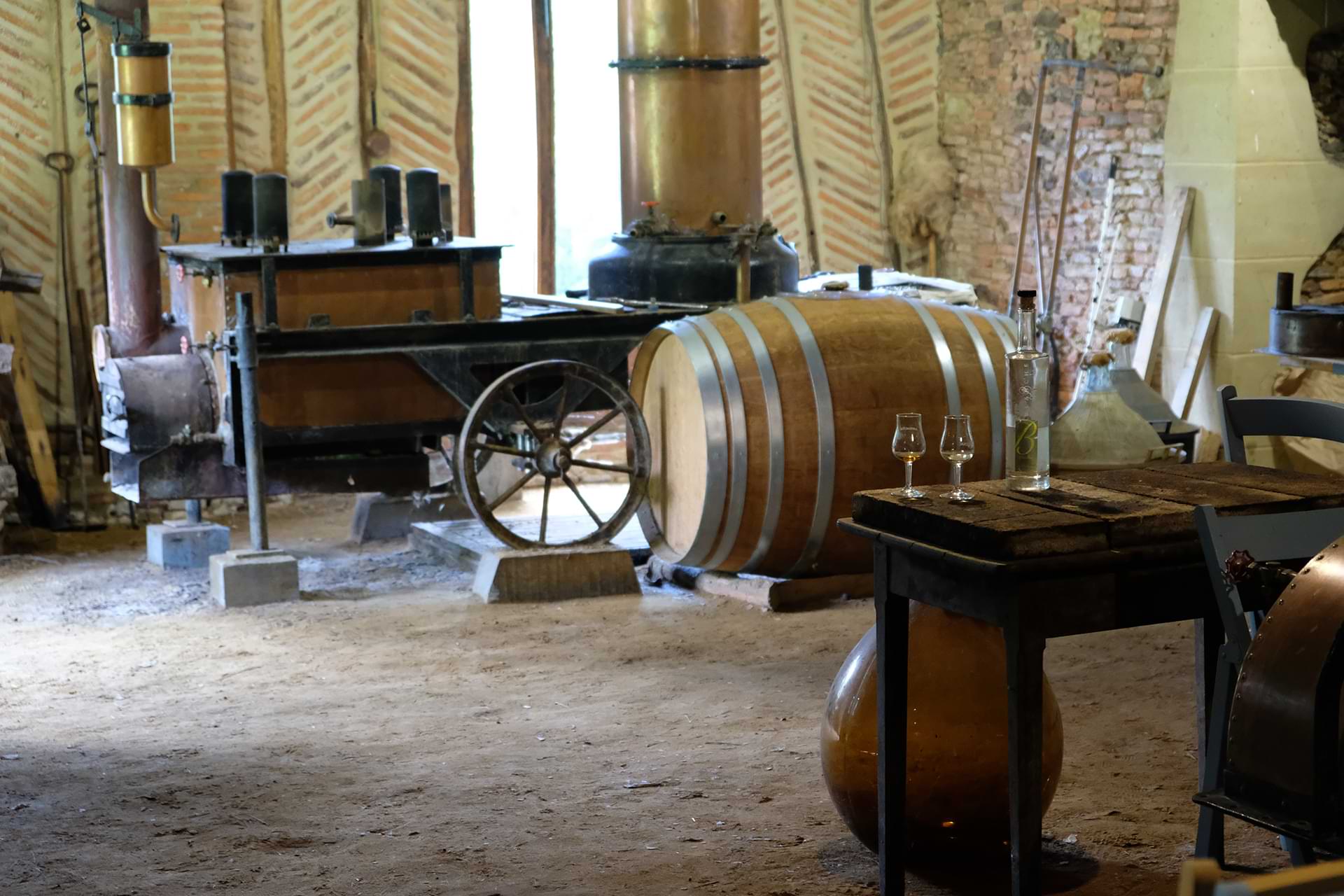Armagnac
Son histoire
La vigne s’implante en Gascogne à l’époque gallo-romaine et se développe tout au long du Moyen Âge. En 1310, Maître Vital Dufour, prieur d’Eauze, décrit les « 40 vertus de l’aygue ardente », ce qui fait de l’armagnac la plus vieille eau de vie de France. En 1373, le « Privilège de Bordeaux » est décidé par Edouard III : il interdit aux vins du « haut pays » dont la Gascogne fait partie, d’accéder au port de Bordeaux avant Noël, réduisant ainsi considérablement leur commercialisation. C’est à cette époque que se développe la distillation des vins blancs, permettant la conservation de ces vins et une réduction des coûts de transport. Le commerce avec les Hollandais, amateurs de ces eaux-de-vie, est l’élément déclencheur de l’augmentation de la production aux XVIIe et XVIIIe siècles. Les techniques de vieillissement sous bois apparaissent progressivement. Elles permettent une évolution de la couleur, de la rondeur et des arômes de l’Armagnac.
Jusqu’au XVIIIème siècle, la distillation est pratiquée au moyen de chaudières à repasse. En 1814, Tuilière dépose à Auch le brevet d’un alambic à marche régulière et continue. Il est adopté et amélioré par les distillateurs et fabricants de la région. Ainsi à partir du XIXème siècle, la distillation continue devient majoritaire, avec l’utilisation d’alambics multi étagés à colonne, dont le développement dans la région lui fait prendre le nom d’alambic armagnacais.
Au XIXème siècle, des négociants de la région font construire des chais spécifiques à l’Armagnac et investissent dans l’amélioration qualitative des eaux-de-vie. Ainsi les techniques d’assemblages et le contrôle du vieillissement sont de plus en plus maîtrisés.
La reconnaissance en appellation d’origine contrôlée est obtenue par le décret du 6 août 1936.

Son terroir

L’Armagnac fait partie des premières productions viticoles françaises à avoir fait l’objet d’un ensemble de règles d’élaboration et d’organisation afin de protéger ses usages et structurer sa production. Ainsi, depuis le décret du 25 mai 1909, le terroir est divisé en trois aires géographique (à l’instar des cinq crus du Cognac) : le Bas-Armagnac, l’Armagnac-Ténarèze et le Haut-Armagnac, réparties dans trois départements : le Gers, les Landes et le Lot-et-Garonne.
- Le Bas-Armagnac, à l’ouest vers Eauze, représente 67 % des surfaces identifiées en Armagnac. Les sols sablo-limoneux, dits sables fauves, y donnent les meilleures eaux-de-vie, fines et fruitées.
- L’Armagnac-Ténarèze, autour de Condom, au centre, représente environ 32 % des surfaces. Les Armagnacs produits sur ces sols boulbènes et argilo-calcaires sont souvent puissants et corsés.
- Enfin, le Haut-Armagnac, à l’est, ne comprend que quelques producteurs.
Ses cépages
L’Armagnac : une eau-de-vie de vin blanc, élaborée à partir d’un ou de plusieurs cépages autorisés par l’AOC :
- l’Ugni-blanc ;
- la Folle Blanche ;
- le Baco ;
- le Colombard
Et les beaucoup plus rares (quelques hectares) :
- Plant de Graisse ;
- Clairette de Gascogne ;
- Jurançon blanc ;
- Meslier Saint François ;
- Mauzac blanc et rosé
La vinification se fait de façon naturelle, avec les levures sauvages et locales.

Sa distillation et son vieillissement

La distillation s’effectue dans un alambic « armagnacais », c’est-à-dire à distillation continue (contrairement au cognaçais), souvent encore alimenté au feu de bois.
Il est ensuite mis en vieillissement plusieurs années en fûts de chêne (jusqu’à 50 ans !) pour être commercialisé en assemblages de plusieurs récoltes, ou en millésimes (une salle année de récolte).
Les fûts, appelés pièces, font environ 420 L et sont élaborés avec des chênes des forêts de Gascogne, du Limousin, parfois même avec les chênes du domaine : la quintessence du terroir !